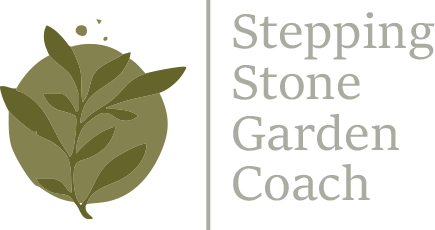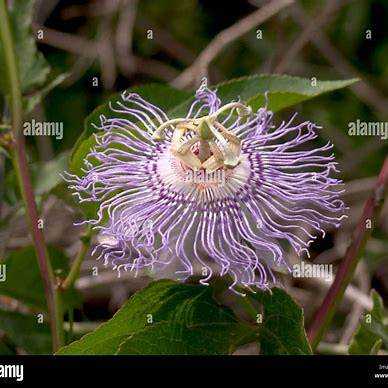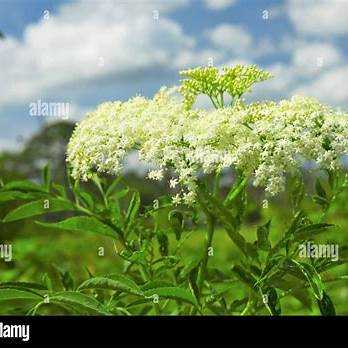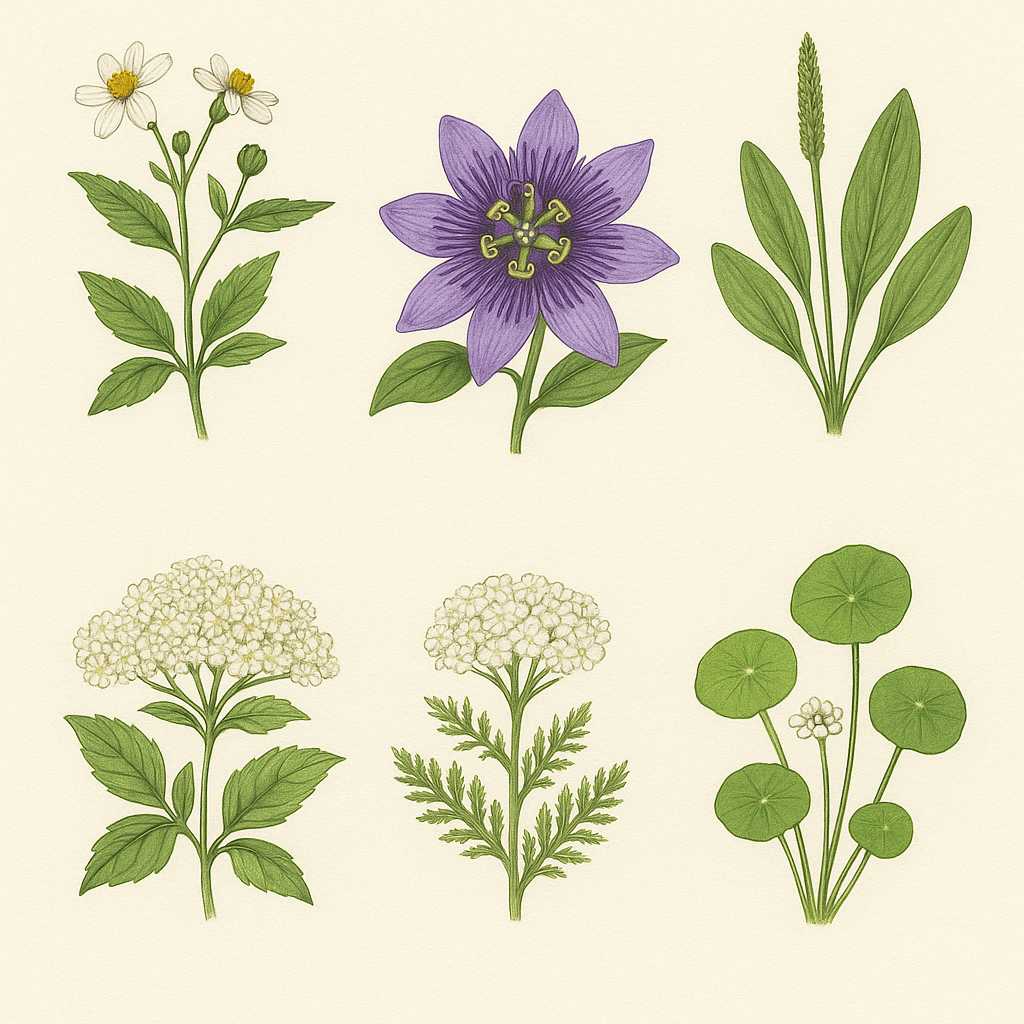 Central Florida summers can be intense—thick with humidity, surprise thunderstorms, and blazing sun. But even in the swelter, some of the most powerful healing plants quietly flourish in backyards, ditches, and garden beds. These are the unsung heroes of July: the blooming weeds and herbs offering everything from skin relief to stress support.
Central Florida summers can be intense—thick with humidity, surprise thunderstorms, and blazing sun. But even in the swelter, some of the most powerful healing plants quietly flourish in backyards, ditches, and garden beds. These are the unsung heroes of July: the blooming weeds and herbs offering everything from skin relief to stress support.
It doesn’t matter if you’re an herbalist-in-training or just a curious gardener, now’s the perfect time to meet a few of Florida’s midsummer medicinal standouts.
Spanish Needle (Bidens alba)
In Bloom: Now through fall
Medicinal Uses: Immune support, wound healing, antibacterial. Traditionally applied as a poultice for skin infections, including MRSA
Where You’ll Find It: Roadsides, garden edges, sidewalk cracks
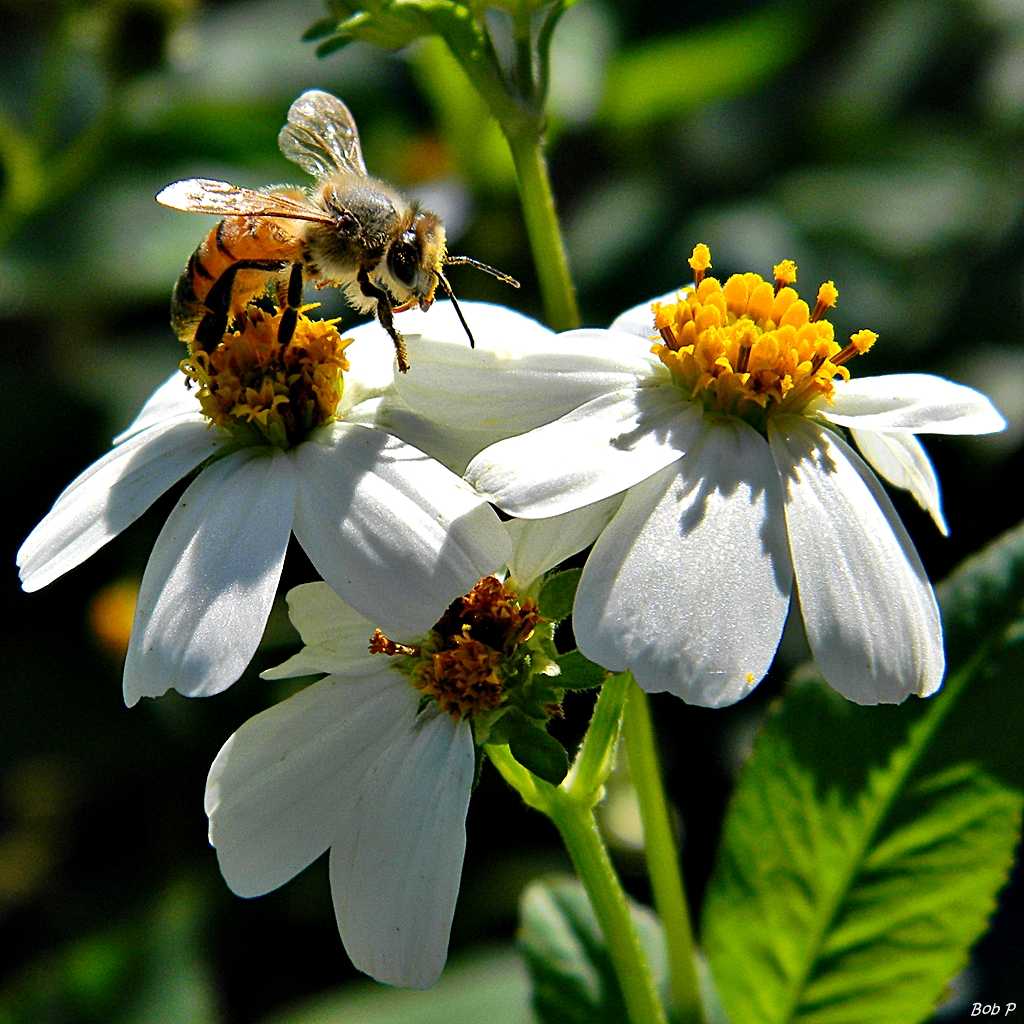
White daisy-like petals surround a bright yellow center.
Opposite, pinnate leaves with toothed edges.
Stems may appear greenish with a slight purplish tint
Medicinal Highlights
According to the Florida School of Holistic Living, Bidens alba is a powerhouse of healing benefits:
Leaves and flowers can be used fresh or as an alcohol-based tincture.
Rich in antibacterial, anti-inflammatory, and antimicrobial compounds.
Traditionally applied as a poultice for skin infections, including MRSA
The plant’s tremendous nutrient density rivals kale, offering fiber, folate, magnesium, and carotenes
This cheerful wildflower is often yanked as a weed, but it’s a favorite among bees—and herbalists. The leaves and flowers can be steeped for tea that’s high in antioxidants and used traditionally for colds, fevers, and wounds. Make a poultice to draw out infection. For quick relief from bites or stings, chew a leaf briefly and place it directly on the irritated skin. Yes, really!
Garden Note: Let a patch bloom to support pollinators—and snip a few for your own herbal apothecary.
Passionflower (Passiflora incarnata)
In Bloom: Right now—those striking purple blooms are hard to miss
Medicinal Uses: Calming the nervous system, promoting restful sleep
Where You’ll Find It: Trellises, fences, sunny spots in your yard
A stunning purple-and-white bloom featuring the distinctive corona filaments and central androgynophore unique to passionflowers Surrounding lush green leaves and tendrils—a sign of its vigorous vine habit in Central Florida
A vibrant Passionflower in full bloom—its intricate purple and white petals and corona signal both visual beauty and deep medicinal potential. Native to Central Florida, P. incarnata supports calm, sleep, and overall nervous health, while also producing edible maypop fruit.
Medicinal Highlights
Uses & Actions:
A trusted anxiolytic (anxiety-reducing) and sleep aid, commonly employed in teas, tinctures, and capsules to soothe nerves and support restful sleep. Clinical reviews have praised its calming, non-addictive properties.
Traditionally used by Native American tribes (like Cherokee and Houma) as root infusions or poultices for boils, earaches, inflammation, insomnia, and even as a tonic during weaning.
Often blended with herbs such as valerian, hawthorn, skullcap, or motherwort for enhanced nervous system support
Culinary Bonus:
Produces edible fruit (“maypops”) July–October, which can be snacked on fresh, turned into jellies, or used as natural garnishes.
Passionflower isn’t just beautiful—it’s one of the best herbs for anxiety and insomnia. The leaves and flowers are used to make teas and tinctures with a gentle sedative effect. Safe for most people, this vine is a calming garden companion in more ways than one.
Fun Fact: Monarch caterpillars love it just as much as herbalists do.
Plantain (Plantago major or P. lanceolata)
In Bloom: Small green flower spikes continue through summer
Medicinal Uses: Skin healer—great for cuts, bites, and stings
Where You’ll Find It: Sidewalk cracks, compacted soil, untended patches
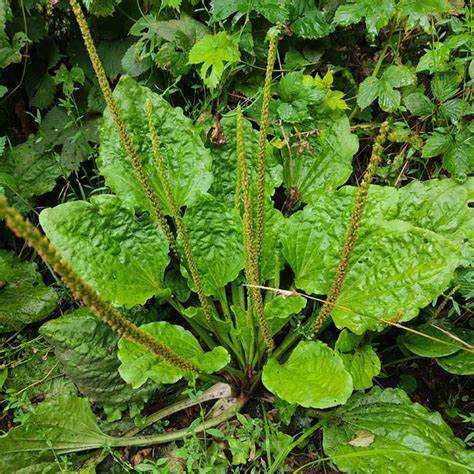
A classic example of broadleaf plantain: large, oval leaves with prominent parallel veins.
Long, slender flower spikes emerging from the base.
Found in lawns, sidewalk cracks, and compacted soil areas.
A hearty plantain plant with broad green leaves and tall flower spikes—a garden-first‑aid staple. Applied fresh, its leaves reduce inflammation and soothe bites; brewed into tea, it eases coughs and gut issues.
Medicinal Highlights
Anti-inflammatory & Wound Healing
Plantain leaves contain compounds like aucubin, allantoin, and tannins that help reduce inflammation and promote tissue regeneration.
A poultice of crushed leaves applied to insect bites, minor cuts, or rashes offers effective relief; recognized topically by German Commission E
Digestive & Respiratory Support
Used internally as a tea or syrup to soothe coughs, irritated lungs, diarrhea, peptic ulcers, and hemorrhoids.
Nutritional & Edible
Young leaves are edible—mild flavor, can be used raw in salads or cooked like greens. The seeds also contain fiber beneficial for digestion
One of the most underappreciated first-aid plants, plantain soothes everything from mosquito bites to bee stings. Crush a leaf and rub it on a bite—it really works. It’s also useful as a gentle drawing agent for splinters or boils.
Garden Tip: Don’t spray it! Let a few grow in a kid-safe zone for quick skin relief.
Elderflower (Sambucus nigra canadensis)
In Bloom: Late spring to midsummer (berries ripen soon after)
Medicinal Uses: Immune support, colds, fevers
Where You’ll Find It: Wet ditches, pasture edges, sunny hedgerows
Clusters of creamy-white, fragrant blossoms—each umbrella-like “umbel” brims with tiny star-shaped flowers.
Compound leaves provide a lush backdrop, typical of elderberry shrubs growing in moist, sunlit Florida habitats .
A lush cluster of elderberry blooms—earlier in July—ready for harvest. Known for its feverdrawing, immune-boosting, and diaphoretic benefits, elderflower can be brewed into a soothing tea or infused into tinctures to breathe relief into your summer wellness routine.
Medicinal Properties & Traditional Uses
Immune & Respiratory Support
Elderflowers are diaphoretic (promote sweating), expectorant, and antipyretic, making them popular in teas and tinctures for colds, flu, sinus issues, and fevers.
Antioxidant and Anti-inflammatory
Rich in flavonoids, phenolic acids, and triterpenes, elderflower infusions offer antioxidant support; research suggests benefits for cardiovascular health and inflammation.
Digestive & Detox Support
Used traditionally to relieve constipation, support healthy digestion, and promote detoxification via mild diuretic action
Topical & Oral Care
Elderflowers can soothe skin inflammation and serve as a gentle mouthwash to alleviate gingivitis and oral discomfort
Safety Notes
Most parts of the elder plant—especially raw berries, seeds, leaves, bark, and stems—contain compounds that can release cyanide. Proper processing (cooking, infusion) makes them safe.
Consult your doctor before use if you have allergies (e.g., pollen, honeysuckle) or are on diabetes or blood pressure medications—elderflower may affect blood sugar and pressure
If you’re lucky enough to have an elder tree nearby, harvest the flowers now for drying. Elderflower teas help break fevers and ease respiratory congestion. Later in summer, the berries (always cooked!) are a staple for immune-boosting syrups.
Harvest Note: Never take all from one plant—leave plenty for wildlife. I have one in the corner of my yard. I decided to plant one after a foraging trip and found something that looked similar to elder, but I couldn’t be sure. I recommend you do the same, or buy from a reputable source, like Mountain Rose Herbs.
Yarrow (Achillea millefolium)
In Bloom: Sporadically in established gardens
Medicinal Uses: Stops bleeding, supports digestion, eases cramps
Where You’ll Find It: Herb gardens, open sunny areas
A cluster of delicate, creamy-white blooms atop flat-topped flower heads, glowing in late-afternoon light.
Finely divided, fern-like leaves typical of yarrow. Stem is upright and sturdy.
A softly glowing cluster of yarrow blooms—tiny white flowers atop a lacy canopy of fern-like foliage. Yarrow is a perennial powerhouse: its anti-bleeding, anti-inflammatory, and digestive-soothing uses have earned it a treasured spot in both traditional and modern herb gardens.
Medicinal Highlights
Wound Healing & Anti-Inflammatory
Yarrow is known for its traditional use in stopping bleeding and helping wounds heal. It contains compounds like tannins, salicylic acid, and volatile oils that act as anti-inflammatory and antiseptic agents. A 2019 study noted that yarrow leaf extracts possess these beneficial properties, supporting its use for minor cuts and abrasions.
Digestive & Menstrual Support
Yarrow tea has been used to ease indigestion, bloating, menstrual cramps, and even support liver and gallbladder function due to its bitter and diaphoretic (sweat-inducing) qualities Some limited clinical evidence suggests potential benefits for menstrual discomfort.
Other Traditional Uses
Native Americans called it “life medicine,” using it for headaches, earaches, and fevers. Greek legend links it to Achilles for battlefield first aid—hence its Latin and common names.
Safety & Precautions
May cause allergic reactions, especially for those sensitive to the daisy family.
Can stimulate menstruation and isn’t recommended during pregnancy or for young children .
Essential oil is potent and should be diluted—studies even show it can act as a mosquito larvicide.
Yarrow is a classic wound herb. Fresh leaves can be applied to stop bleeding; dried flowers make excellent tea for colds and menstrual discomfort. It’s beautiful and tough, with feathery leaves and white-to-pink blooms that attract pollinators.
Garden Note: Tolerates heat and drought once established—Florida tough!
Pennywort (Hydrocotyle umbellata)
In Bloom: Now, with small white blooms
Medicinal Uses: Detox support, skin clarity, mild diuretic
Where You’ll Find It: Wet lawns, near ponds, along lakeshores
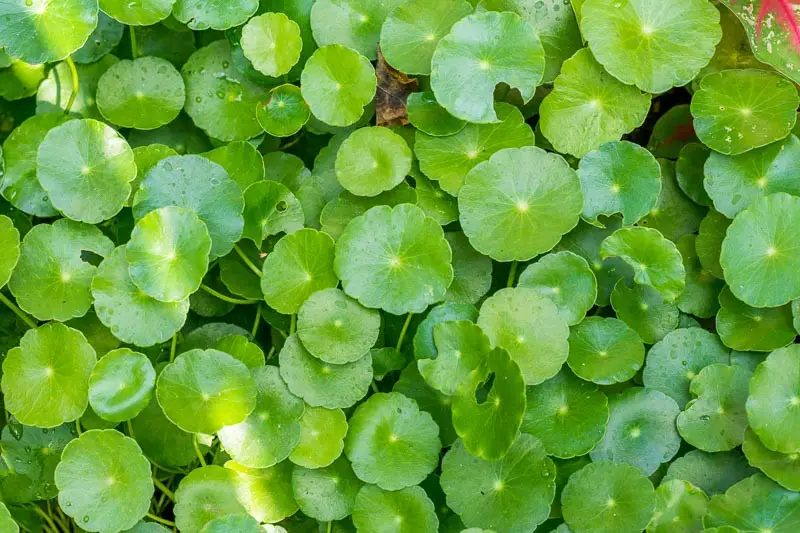
Round, glossy green leaves with scalloped edges, each petiole attached near the center creating a “coin-like” appearance—growing in mats near water or moist soil
Tiny white star-like flowers arranged in small umbrella-shaped clusters (umbels) often rising above the leaves in summer.
Also called dollarweed, pennywort is used in traditional herbalism for calming inflammation and promoting clear skin. It can be eaten in small amounts raw or brewed as tea—but be absolutely sure of your ID first.
Caution: Only use pennywort from clean, chemical-free areas.
A quiet patch of marsh pennywort spreads across moist soil—its coin-shaped leaves hinting at deep medicinal value. Mildly calming, anti-inflammatory, and rich in minerals, pennywort makes a gentle, nourishing tea or salad green in July’s heat.
Medicinal Benefits & Uses
Relaxing, Anti‑Inflammatory & Nerve Support
Brazilian folk medicine uses the aerial parts (leaves and stems) of H. umbellata as an anxiolytic and sedative, supported by mouse studies showing reduced anxiety‑like behavior at moderate doses.
Also traditionally employed as a mild anti‑inflammatory and analgesic, based on ethnobotanical reports and early lab findings.
Nutritional & General Wellness
Eaten fresh as a salad green or brewed into tea; rich in minerals like calcium, magnesium, and zinc, which support digestion, bone health, blood sugar balance, and possibly cognitive function
In Ayurvedic traditions, H. umbellata var. bonariensis is considered a “rasayana,” or rejuvenating tonic, used to support memory and counteract aging
Easy Uses in Central Florida
Tea: Steep clean, fresh leaves in hot water to enjoy a soothing herbal brew that helps calm nerves and support digestive comfort.
Salad green: Wash thoroughly and add a handful of small leaves to your summer salads for mild, vegetal flavor and nutrient boost.
Topical paste: Crush fresh leaves and apply to minor skin irritations (bug bites or rashes) for gentle cooling relief.
Safety & Harvesting Tips
Always harvest from clean areas—avoid roadsides or chemically treated lawns to ensure safety.
Use moderately; high doses may have sedative effects or interact with medications, especially sedatives or sleep aids.
Pregnant or breastfeeding individuals should consult a healthcare provider before use.
Rethinking “Weeds”
Many of these plants are considered weeds by conventional standards—but they’re anything but useless. In fact, they’re some of the most resilient, nutritious, and pollinator-friendly plants you can invite into your yard.
Letting a few wild allies remain in your landscape can offer quick, easy access to herbal remedies and create a richer ecosystem. That’s a win-win for bees, butterflies, and your own well-being.
July Garden Tip of the Month:
Avoid over-fertilizing during Florida’s summer blackout period (June–September). Instead, focus on compost teas, seaweed tonics, and mulch to keep your soil hydrated and alive.
Next Steps:
Start a “wild patch” in your garden for edible weeds and native herbs.
Add plantain or yarrow to your kitchen garden for quick skin relief. I recommend buying from Strictly Medicinal Seeds
Snap a photo of something blooming in your yard and send it to me!
Want to go deeper?
Schedule a 1:1 consult with me and let’s explore what’s growing in your yard—and how to use it. I’ll help you identify, harvest, and start your own healing garden one plant at a time.
~ Larissa
